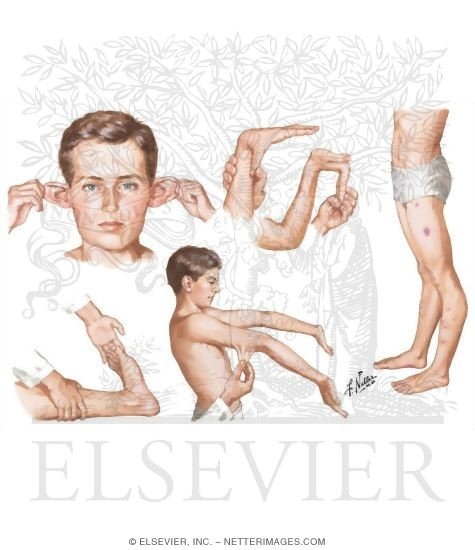
Department of Pediatric Dentistry
Resident’s Name: Murphy Program: Lutheran Medical Center - Providence
Article title: Orthodontic Treatment Protocol of Ehlers Danlos Syndrome Type VI
Author(s): Arun, Tulin. Didem Nalbantgil, Krkmaz Sayinsu
Journal: Angle Orthodontist
Year. Volume (number). Page #’s: 2006, 76(1). 177-183
Major topic: Considerations for orthodontically treating a patient with Ehlers Danlos Syndrome(EDS).
Overview of method of research: A 17 year old male with EDS was treated orthodontically, and followed throughout treatment
Findings: EDS is characterized by abnormalities of CT leading to fragility of the skin and blood vessels, hyperextensibility, and hyermobility of joints. The patient in the report was class 3, extensive crowding, supernumerary teeth (one mesiodens), and bilateral anterior and posterior cross-bites. The initial treatment plan included surgery due to the severity of the class 3. However this was ruled out due to the increased risks of bleeding, poor healing, and the increased possibility of complication later on in treatment. The supernumerary tooth was extracted. A lower incisor was extracted after a wax setup was completed. Rapid palatal expansion had to be performed to obtain enough space and to fix the cross-bites. The maxillary incisors were flared for proper overbite/overjet. The case was finished in 34 months, and the patient was fit with permanent retention.
Because patients with EDS have poor healing, special care should be given to their oral hygiene and periodontal status. The patient was put on 3 month recall so he could be closely monitored. Also, because patients with EDS have hypermobility and usually a history of subluxing joints, special care should be given to the TMJ. It was ensured that the patient did not stay open for too long, or open too wide during appointments. A TMJ exam was completed every 6 months to ensure its health. Due to the fragility of CT in EDS patients, there can be increased mobility of teeth during treatment. This can stress the periodontal fibers, resulting in slow repair. Therefore, slow, light force was used throughout treatment to avoid any untoward effects.
Key points/Summary: When treating a patient with EDS remember….
1. There may be decreased wound healing and vascular fragility. Don’t do surgery unless you have to!
2. They are hyermobile, and often sublux joints. Don’t make them stay open for too long, or too wide.
3. Keep a close eye on their periodontium and STRESS OHI.
4. Hyermobility of teeth can be normal.
5. If you’re doing ortho, use light force.
Assessment of Article: Good review on what to keep in mind when treating a patient with EDS. Holla back.
No comments:
Post a Comment